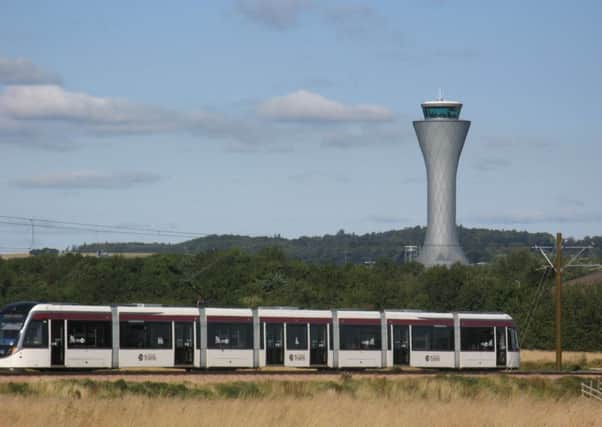It’s all down to business


Fifty years later, motor vehicles were rapidly taking over. Private cars were being sold as fast as they could make them. Trams and their half-caste off-spring trolleybuses were rapidly being replaced by diesel buses. Lorries were seizing goods traffic from the railways. People were flying off in aeroplanes for their holidays instead of spending their annual holiday fortnight in British seaside resorts.
The result was that the Railway Modernisation Plan of 1955 was based on two main premises: the first was a recognition that there were still some things which railways could do better than any alternative. The second was that in order to achieve success the railways must be electrified, and that in the meantime they must have diesel power instead of steam.
Advertisement
Hide AdAdvertisement
Hide AdThe railway is a huge and complex organisation, and any change, especially on such a massive scale, takes time. Ten years was break-neck speed. Politicians, on the other hand, cannot generally see beyond the next election less than five years away, and they want results now. By the next election it seemed to them that not much had happened, so they employed what Americans call a Go-getter to speed things up.
Dr Beeching, who most people think of as the destroyer of much of the railway system, was employed to think constructively about what those things were. He was not a railwayman, he was a brilliant economist, and he established the principle of the railway of not doing what does not pay, which is a basic business principle.
This was quite at odds with railwaymen’s instincts, which were to operate the railway as a service rather than as a business.
Dr Beeching’s political boss was Ernest Marples, who had been appointed by the prime minister, Harold Macmillan, to be Minister of Transport, knowing full well what would happen, because Marples was in business as a road builder.
Advertisement
Hide AdAdvertisement
Hide AdAs minister, he was advised by civil servants. One in particular, David Serpell, comes into the story 20 years later.
Dr Beeching published his report, The Reshaping of British Railways, in 1963, and naturally it caused a furore.
To help with justifying its recommendations he employed a journalist who, by his very nature, was used to putting a slant on things.
One of the recommendations was to do away with duplicate routes. This has not stood the railways in good stead, for when there is trouble nowadays they cannot easily divert trains, but have to resort to replacement buses.
Advertisement
Hide AdAdvertisement
Hide AdTo implement this policy, Dr Beeching proposed to close the East Coast Main Line between Newcastle and Edinburgh, concentrating all the Anglo-Scottish traffic onto the West Coast route. He dismissed objections to the closure of the East Coast line by saying that nobody would be inconvenienced, except a few people at Berwick-upon-Tweed.
The closure of the Waverley line also followed this policy, and was reputedly necessary to obtain approval for the electrification of the West Coast line, on which all the Anglo-Scottish traffic was to be entirely dependent. As it turned out, the Waverley line was lost but the East Coast line saved.
There is a little curiosity in the closure of the Waverley line, which seems to have perhaps been more as a result of British Rail’s internal politics rather than Dr Beeching’s plan directly, because maps dated 1965 showing the forecast shape of the rail network show that at that time both the East Coast line and the Waverley route were expected to be still in existence in 1984, though not scheduled for development. In other words they would have been left to ‘wither on the vine.
Mrs Thatcher, who was notoriously anti-rail, tried to push the Beeching process further in 1982 by asking David Serpell to produce another report on the same lines. This included several options, of which only the most severe received any publicity, and was so extreme that, for example, there would have been no railways left in Scotland north of the central belt. The politicians were not prepared to take the risk of the reaction on the part of the voters if this went ahead, and it quickly sank into obscurity.
Advertisement
Hide AdAdvertisement
Hide AdHaving replaced all steam engines with diesels by 1967, little progress was made with electrification, on the grounds that diesel oil was cheap.
In 1973 there was the first realisation that oil was a finite resource, and we really ought to be looking ahead to consider what would happen when it gradually became scarcer and therefore more expensive, but still very little was done, and first the West Coast, and then the East Coast main lines were electrified with much penny-pinching.
As usual, when something is built on the cheap it gives trouble, and costs far more to keep going than it would have cost to do it properly in the first place.
The Edinburgh tramway came into being in May 2014 with much travail from the Airport to the city centre (York Place). The cost for the scheme in 2003 was estimated to be £375m, but the outturn figure was more than double this. There was a great deal of discontent in Edinburgh as a result.
Advertisement
Hide AdAdvertisement
Hide AdHowever, once it was up and running it was well used, and the City of Edinburgh Council is now minded to press on with the planned route down Leith Walk and along to Newhaven. This will leave just the section from there looping back to Haymarket to be built later to complete the whole of the original plan.
John Wylde is the author of ‘Integrated Transport – a Will-o’-the-wisp?’ This book is priced at £14.95, post paid and signed by the author. Also ‘Experiments in Public Transport Operation’, at £11.95. Order through the author’s website, www.john-wylde.co.uk, or from Grieves on the corner of Church Street in Berwick.